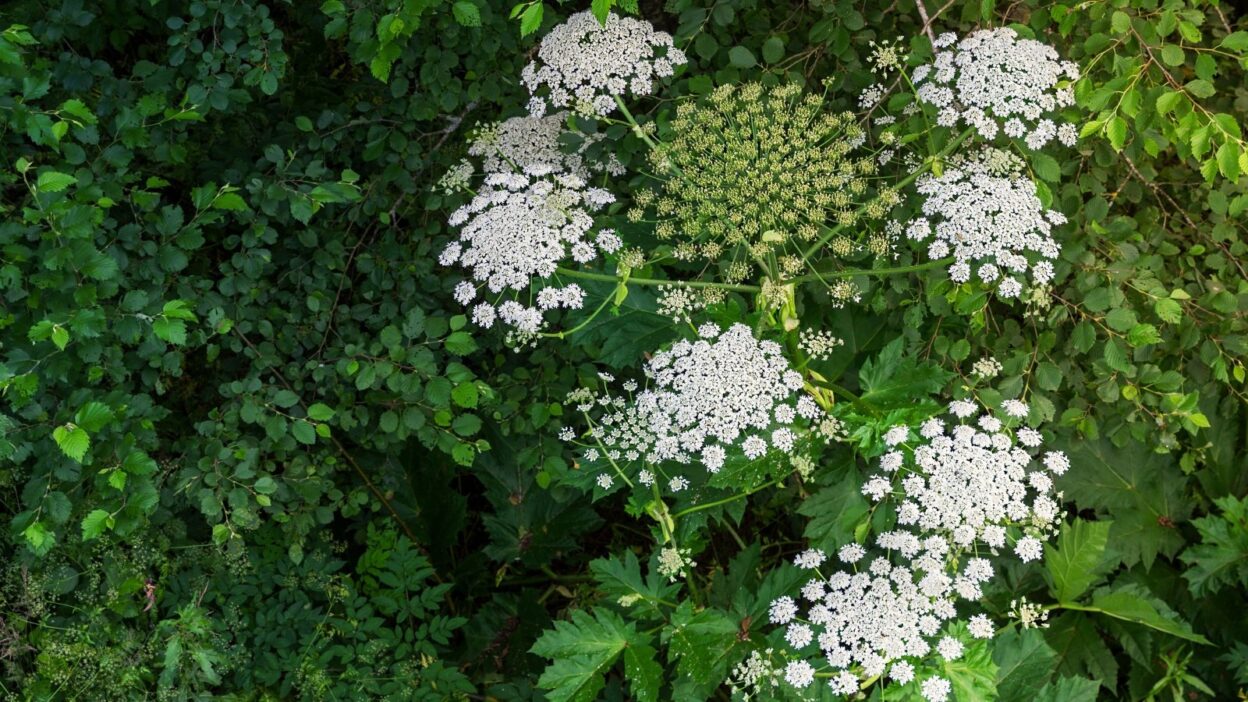While some foliage and flowers are delightful to handle, there are some plants you just shouldn’t touch. Itchy plants are wrapped up in some of my most memorable moments.
I spent hours of my childhood running around streams, where I accidentally brushed up against patches of stinging nettle and then soothed the itch with jewelweed stems. My hands have been covered with itchy blisters caused by touching poison ivy stems as I weed beds of veggies and flowers. And I can’t forget the hot afternoons I spent picking okra in a uniform of long sleeves and gloves.
You probably won’t forget if you’ve come into contact with irritating foliage. But if you don’t know what caused your itchy or painful skin, it’s hard to avoid the species the next time you see them! Hopefully, becoming familiar with this list will let you stay away from them in the future.
Disclaimer: If you are dealing with an irritating rash, please contact a medical professional for help. While this article helps to identify irritating plants, it is not a substitute for medical advice.
Cow Parsnip/Giant Hogweed
Cow parsnip, also known as giant hogweed, American hogweed, and Indian celery, is native to the United States. It grows in various environments with moist soil, including meadows, marshes, and the banks of rivers and streams. Depending on the location, it grows as a biennial or short-lived perennial. They produce a cluster of short, basal leaves in their first year, then send up tall, branching stalks topped with umbels of tiny white flowers.
The sap present in the leaves and stems contains substances classified as furanocoumarins. When these compounds get on your skin and are exposed to sunlight, they can cause a serious, blistery rash. Therefore, you should be careful to avoid rubbing against broken leaves or stems.
Poison Ivy
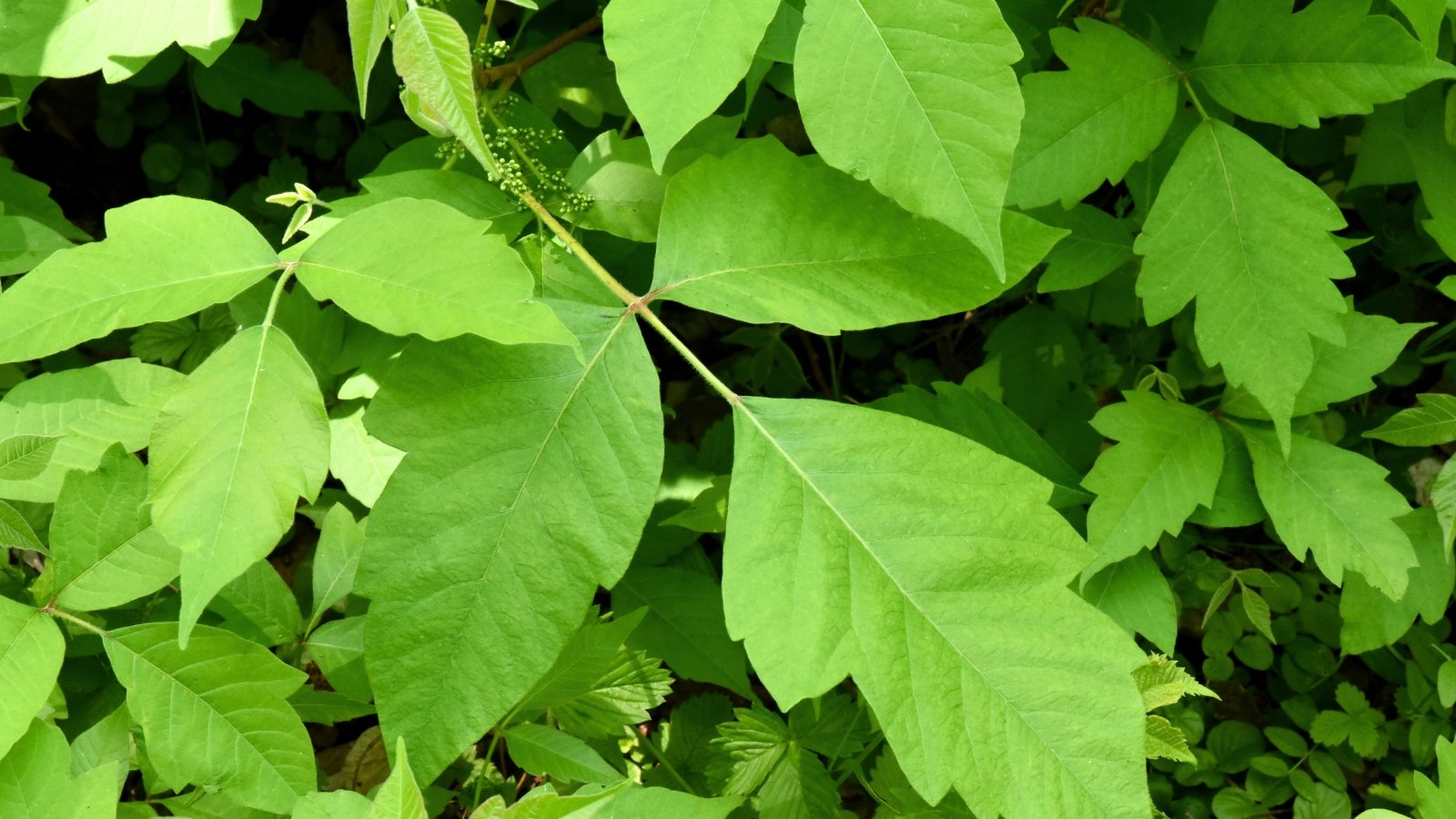
Most of us know this itchy species: poison ivy. It produces alternately arranged compound leaves with three distinct leaflets. You may have heard the phrase, “leaves of three, stay away from me!” This rhyme is helpful to teach kids. The shiny foliage remains green in the spring and summer and turns yellow or red in the winter.
Unfortunately, you can find poison ivy throughout the continental United States. It can take on various growth forms, from small green foliage peeking out of the ground to large vines growing up tall trees. Although people often touch the vines without realizing what they are, you can often identify them by their rough brown hairs.
All parts of the plant contain an irritating oil called urushiol. When your skin comes into contact with this oil, it often develops an itchy and sometimes painful rash. Many people develop raised red bumps and blisters, but some are susceptible to flat streaks or black dots. Although you may think the poison ivy rash spreads over time, it doesn’t. However, areas that came into contact with urushiol develop the rash at different rates, creating the illusion that the rash is spreading.
You don’t have to come into contact with the plant to develop the rash. Brushing up against a dog, shirt, or pair of work gloves that contain the oil can lead to scratchy blisters. Therefore, it’s a good idea to wash any clothing that’s come into contact with poison ivy.
Wild Parsnip
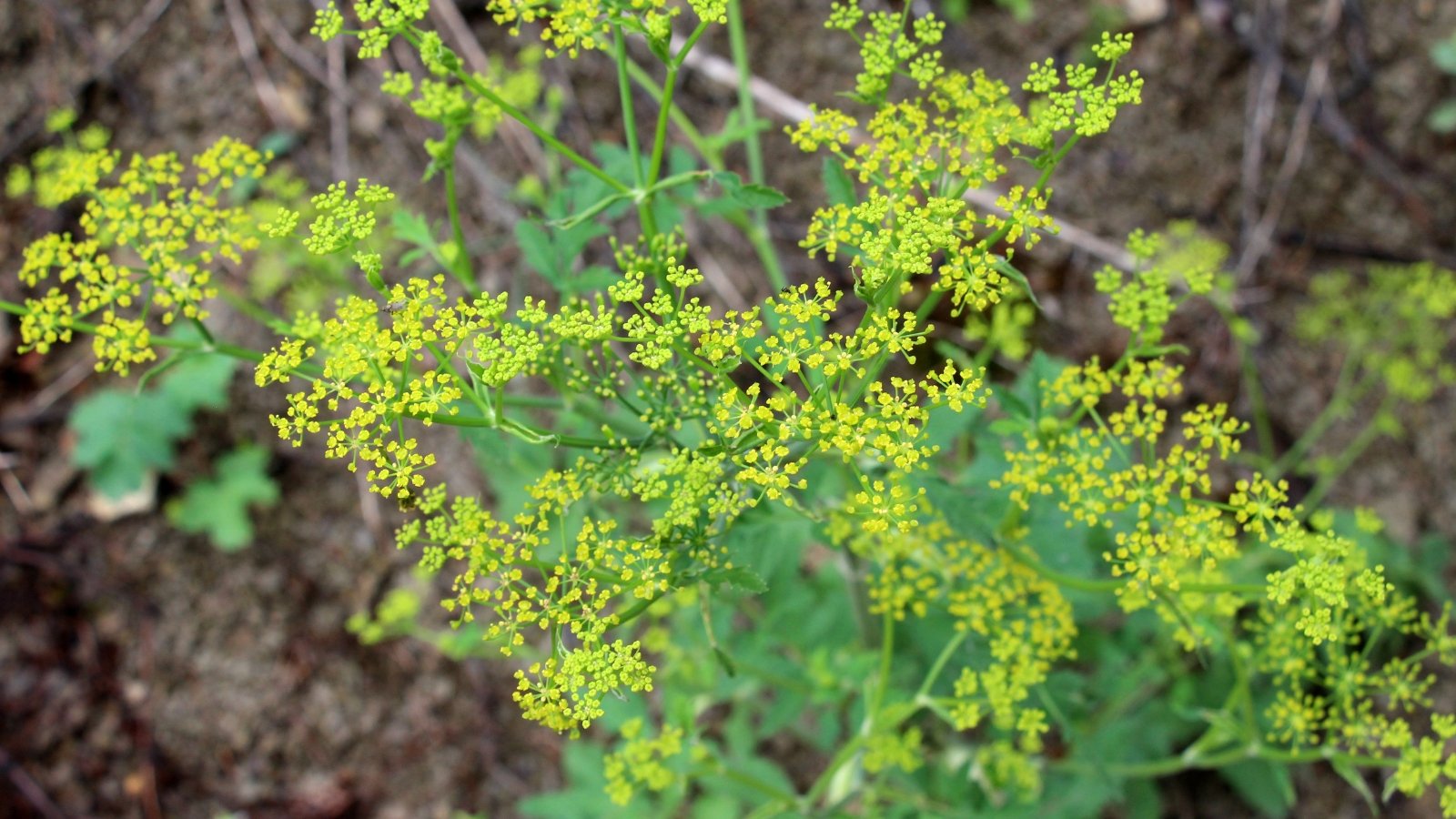
An invasive species in portions of the United States, wild parsnip is a biennial native to Europe. You can often find it growing in disturbed meadows and roadsides in the United States. Wild parsnip produces a rosette of large, compound leaves in the first year. In the second year, it sends up a branching flower stalk with smaller compound leaves and umbels of tiny yellow flowers.
The sap contains furocoumarins that cause phytophotodermatitis. While the sap won’t cause a rash immediately, exposed skin will turn red and painful after exposure to sunlight. Therefore, you should keep your skin covered when pulling or working around this weed.
Atlantic Poison Oak
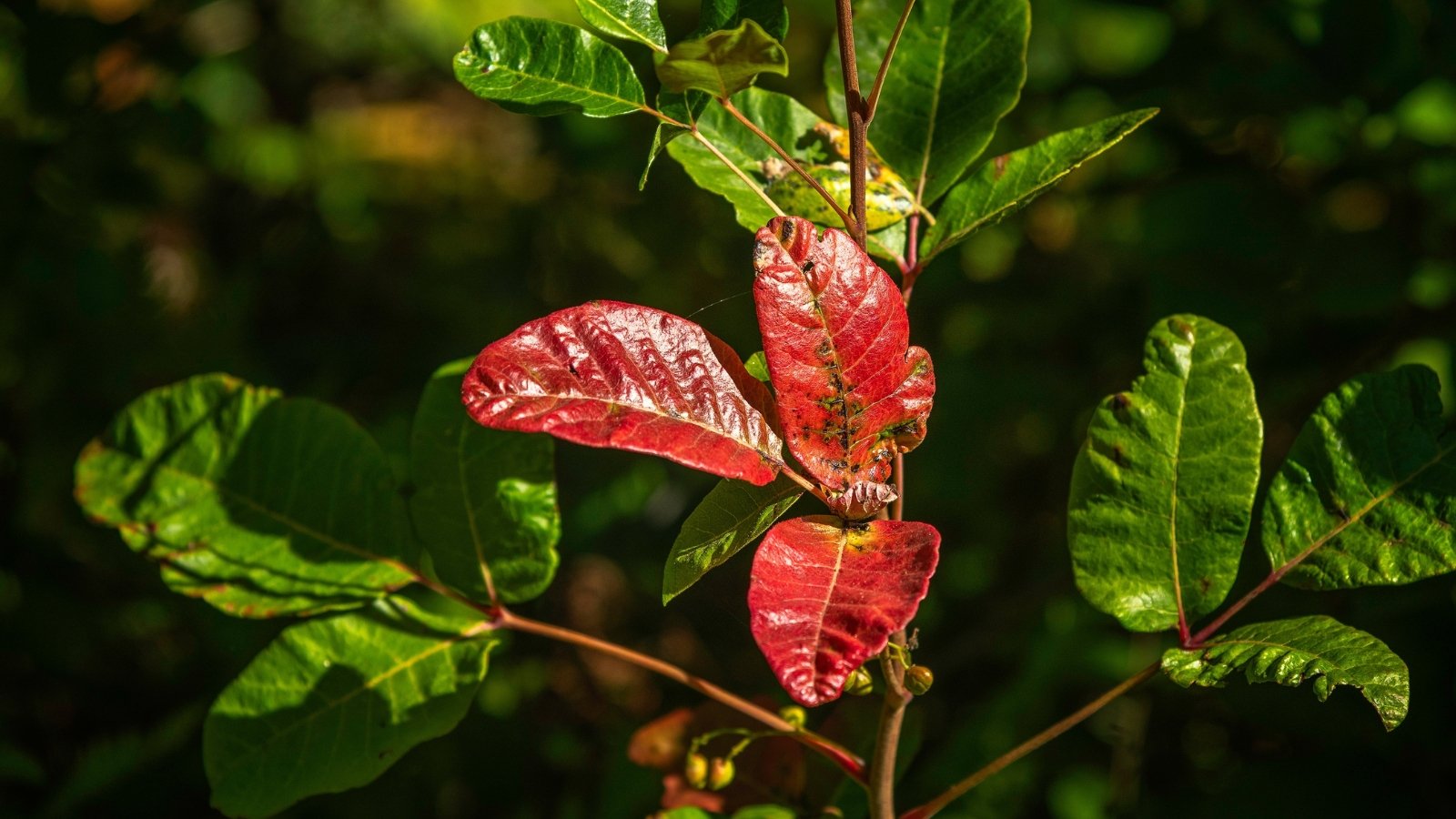
Atlantic poison oak grows as small to medium shrubs with compound leaves featuring three leaflets. The leaves resemble those of poison ivy, but the leaflets feature less pointed tips, more rounded margins, and small hairs. You can find this species of poison oak growing throughout the southeast quadrant of the United States, from Texas to Florida to Illinois and New Jersey. Poison oak prefers dry soil.
Since they spread via rhizomes, multiple shrubs often grow in the same area. Although these appear as individuals, they’re often all connected underground. Poison oak produces clusters of light yellow, star-shaped flowers in the spring, followed by light green, round fruits.
Poison oak isn’t a true oak but is closely related to poison ivy. It contains urushiol oil, which can cause blistering and itchy rashes. Since the oil can remain on materials for a few days and then transfer to your skin, make sure to wash any clothing and pets that come into contact with it.
Western Poison Oak
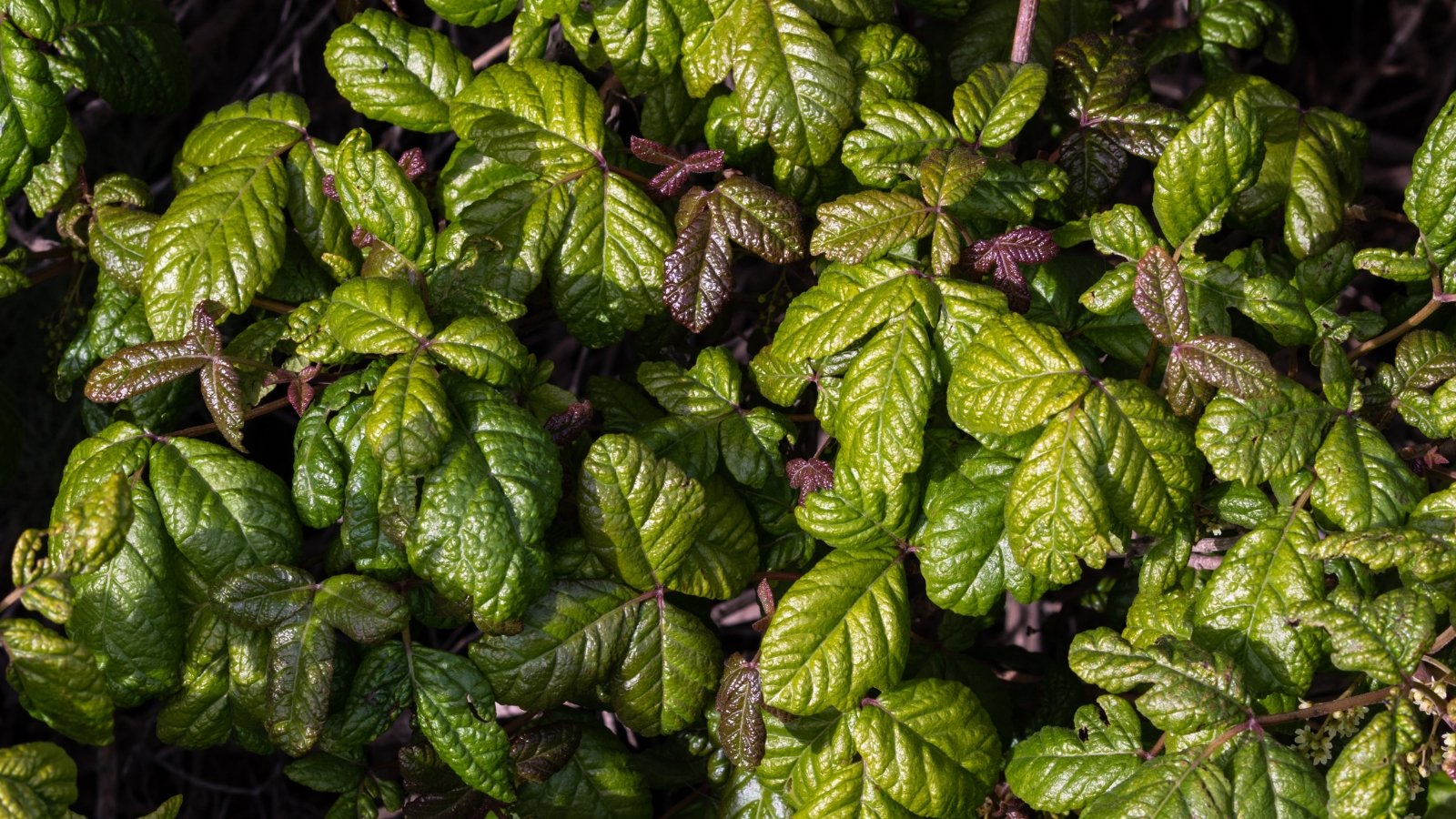
Western poison oak, also known as Pacific poison oak, grows in western states. It can appear as a small shrub, tall vine, or any form in between. The plant produces compound leaves with three leaflets with toothed or lobed margins. The leaves are green in the spring before changing to yellow-green, orange, and then red.
This type of poison oak produces clusters of light green to yellow flowers in the spring, and these flowers turn into small white fruits by summer. Although the foliage drops in the fall, the round fruit may remain throughout the winter. You can find this poison oak in various habitats, including open meadows and dappled forest understories.
Like other members of the Toxicodendron genus, western poison oak produces urushiol. Many people who come into contact with this oil will develop an itchy rash hours or days later. Therefore, you should avoid touching the leaves and vines of this plant, as well as any materials that have touched the plant.
Poison Sumac
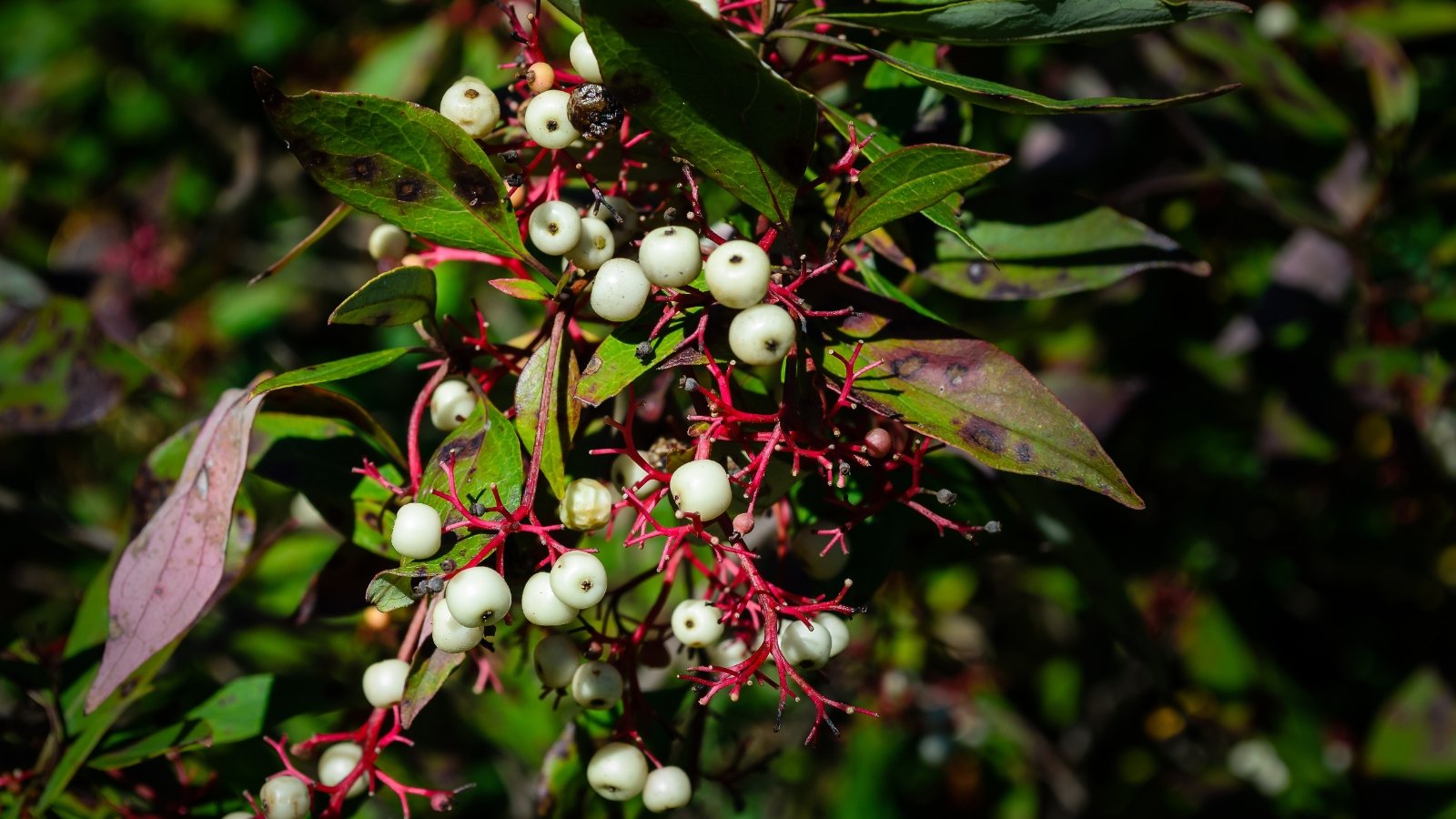
Native to the parts of the eastern and central United States, poison sumac grows as a large shrub or small tree. Since it prefers moist soil, you’ll often find it growing alongside streams or in marshy areas.
The bark is smooth and light gray or brown. Leaves are compound with 7-13 elongated, pointed leaflets on each leaf. The foliage remains green in the spring and summer, then turns a fiery shade of orange or red in the fall. The trees produce large clusters of light yellow flowers in the fall and small round fruits in the summer.
Like other members of its genus, poison sumac stems, leaves, fruits, and roots produce irritating urushiol. When this compound comes into contact with the skin, many people develop an itchy red rash a day or two later. Therefore, you should avoid touching this plant.
Common Nettle
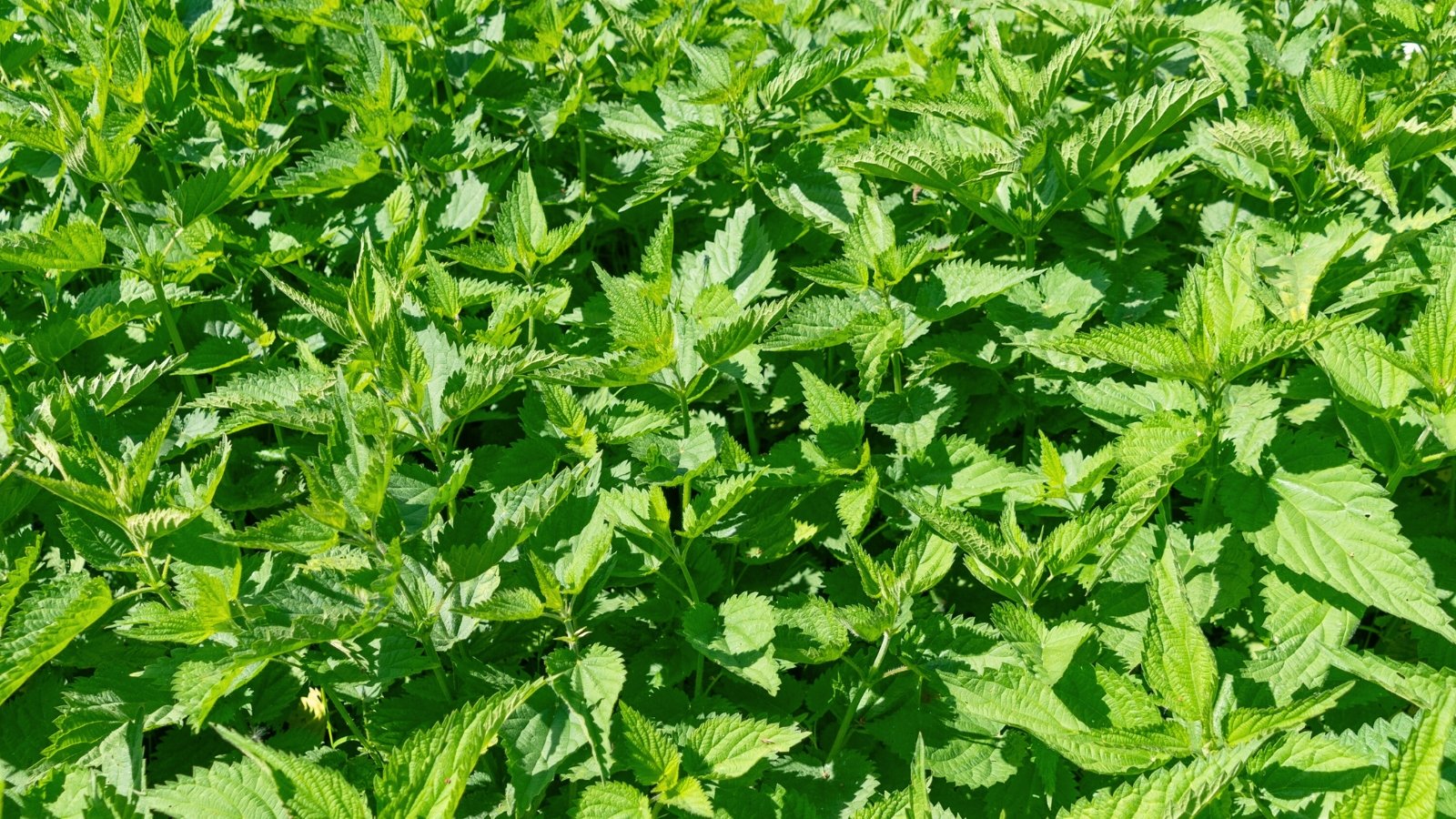
Although it’s native to Eurasia, there are patches of common nettle in most moist areas of the United States. The herbaceous plants look innocent, but rubbing against them imparts an unmistakable burning sensation. That’s why people also refer to this plant as “stinging nettle” or “burning nettle.”
Since the plant spreads by both rhizomes and seeds, you’ll often find large patches of it. Steambanks and wet forest edges are common homes, but you can find it growing anywhere moist. Look for square stems and heart-shaped leaves with saw-tooth margins.
The irritating aspect of this plant comes from tiny hair-like spines that cover the leaves and stems. Shortly after contacting the spines, you’ll notice a burning or stinging sensation. Cooking removes the hair’s irritating aspects and allows people to safely consume the nutritious leaves.
Cape Leadwort
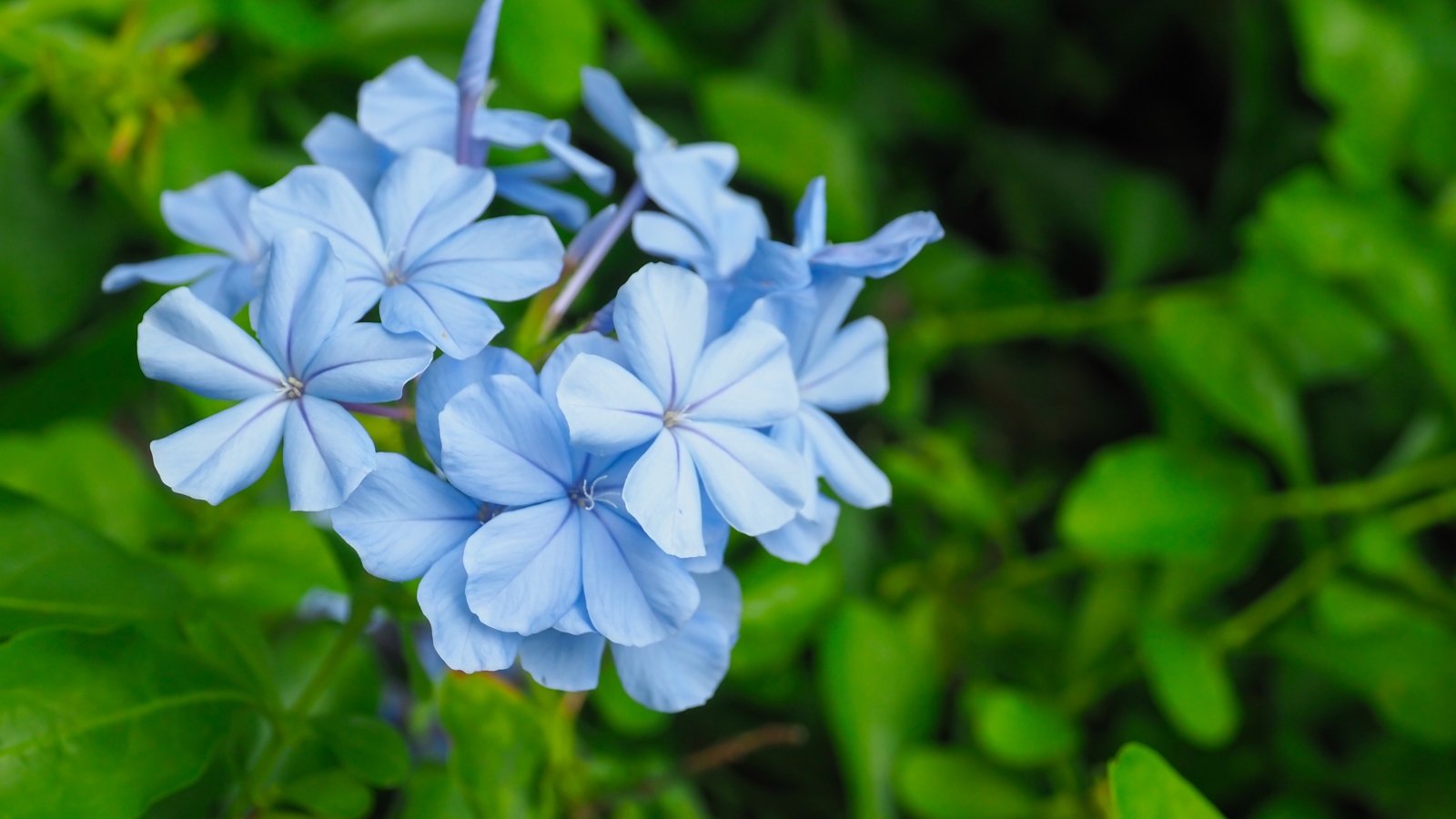
Also known as “cape plumbago,” this species grows as a shrub or vine. It’s native to southern Africa, but gardeners in warm areas plant it for its drought tolerance and clusters of phlox-like flowers.
Touching the plant’s leaves, stems, and roots can cause blisters and general skin irritation in some people. The compound plumbagin is responsible for the irritation. Wearing gloves and long sleeves when handling this plant will help limit this unpleasant irritation.
Annual Ragweed
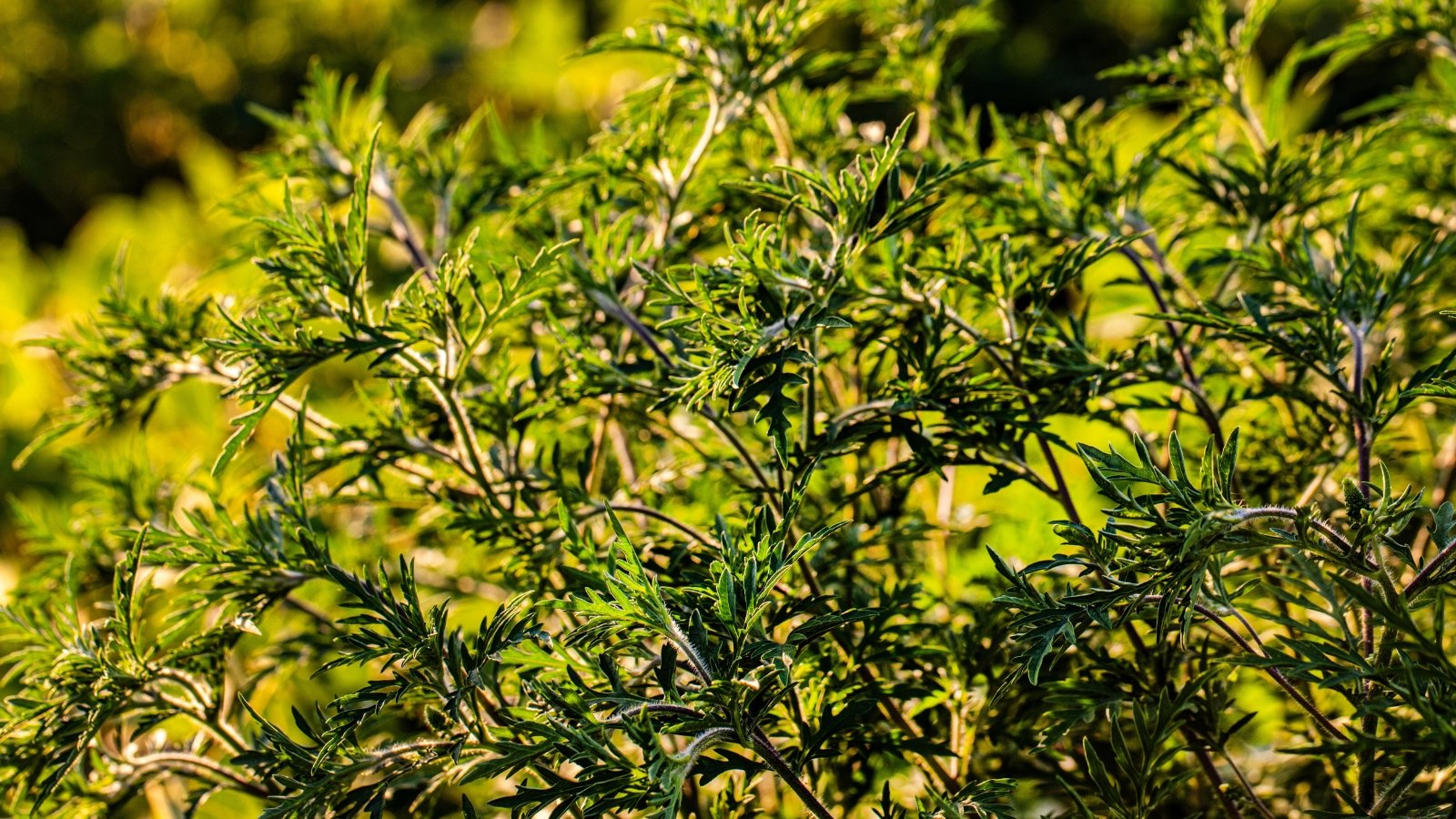
Ragweed is an annual found throughout much of the United States. It produces deeply lobed leaves that have a somewhat rounded, lacy appearance. As the plants grow, they develop a branchy form and a slightly woody stem.
Ragweed releases lots of pollen in the late summer and fall, which causes runny noses, itchy eyes, and sneezing. While simply breathing in the pollen can cause these symptoms to appear, touching ragweed can also cause some people to develop an itchy, red rash. Those affected will typically develop the rash one to two days after exposure. Therefore, you should avoid exposing bare skin to ragweed unless you’re sure it doesn’t affect you.
Since ragweed produces so many seeds, it can quickly spread. Tarping the area where ragweed grows is one way to keep the plants under control without touching them.
Baby’s Breath
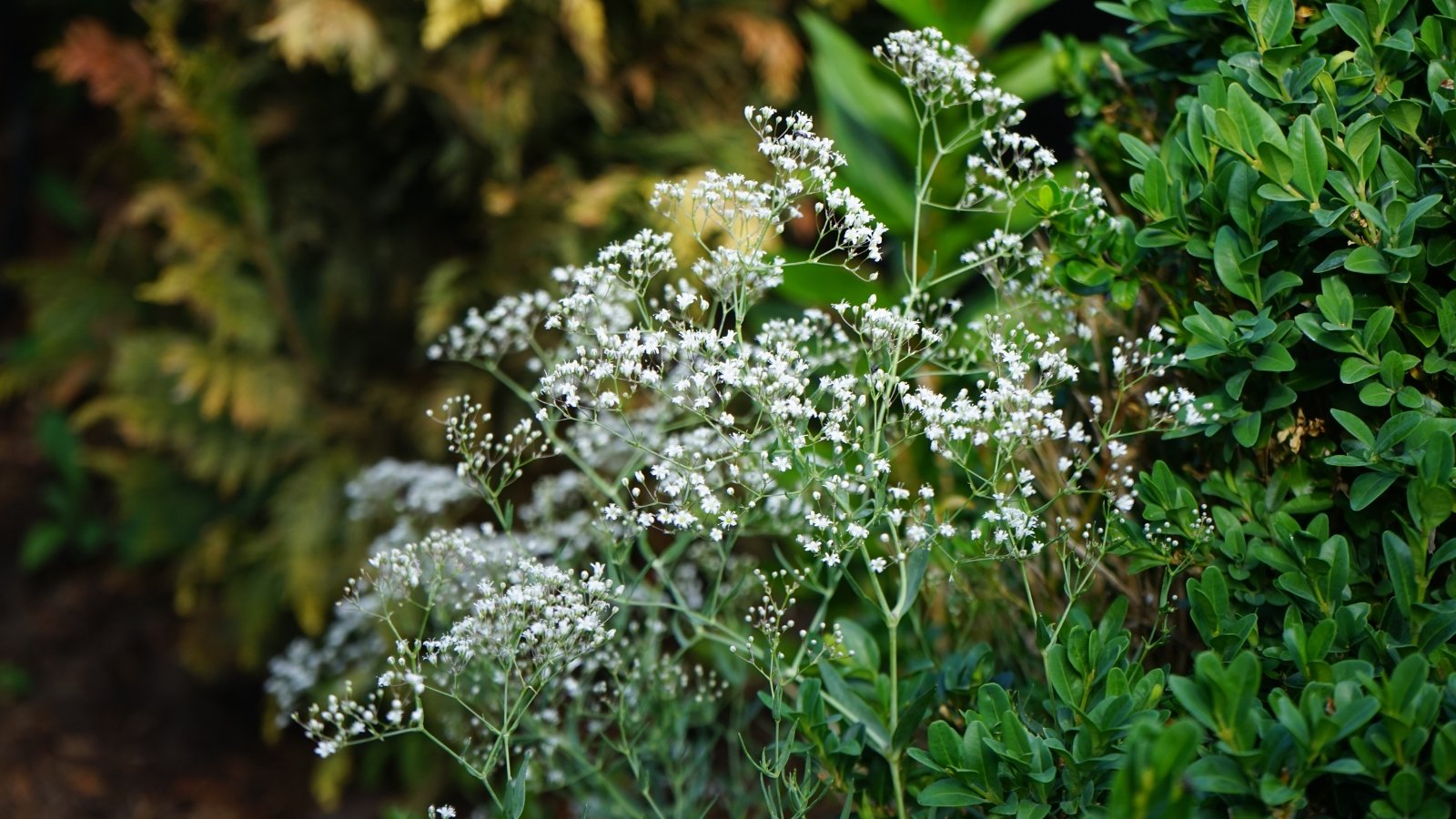
A perennial known for its beautiful white flowers, baby’s breath is a favorite plant of flower farmers and florists. Although native to Europe, people cultivate them in the United States. The flowers have escaped cultivation in some areas and become a nuisance weed.
Many people can handle baby’s breath without worry, but touching the plant can cause some people to develop a red rash. Therefore, you should pay attention to how your skin reacts after handling the plant. If you notice any redness or hives, wear protective clothing the next time you handle the plant.
Okra
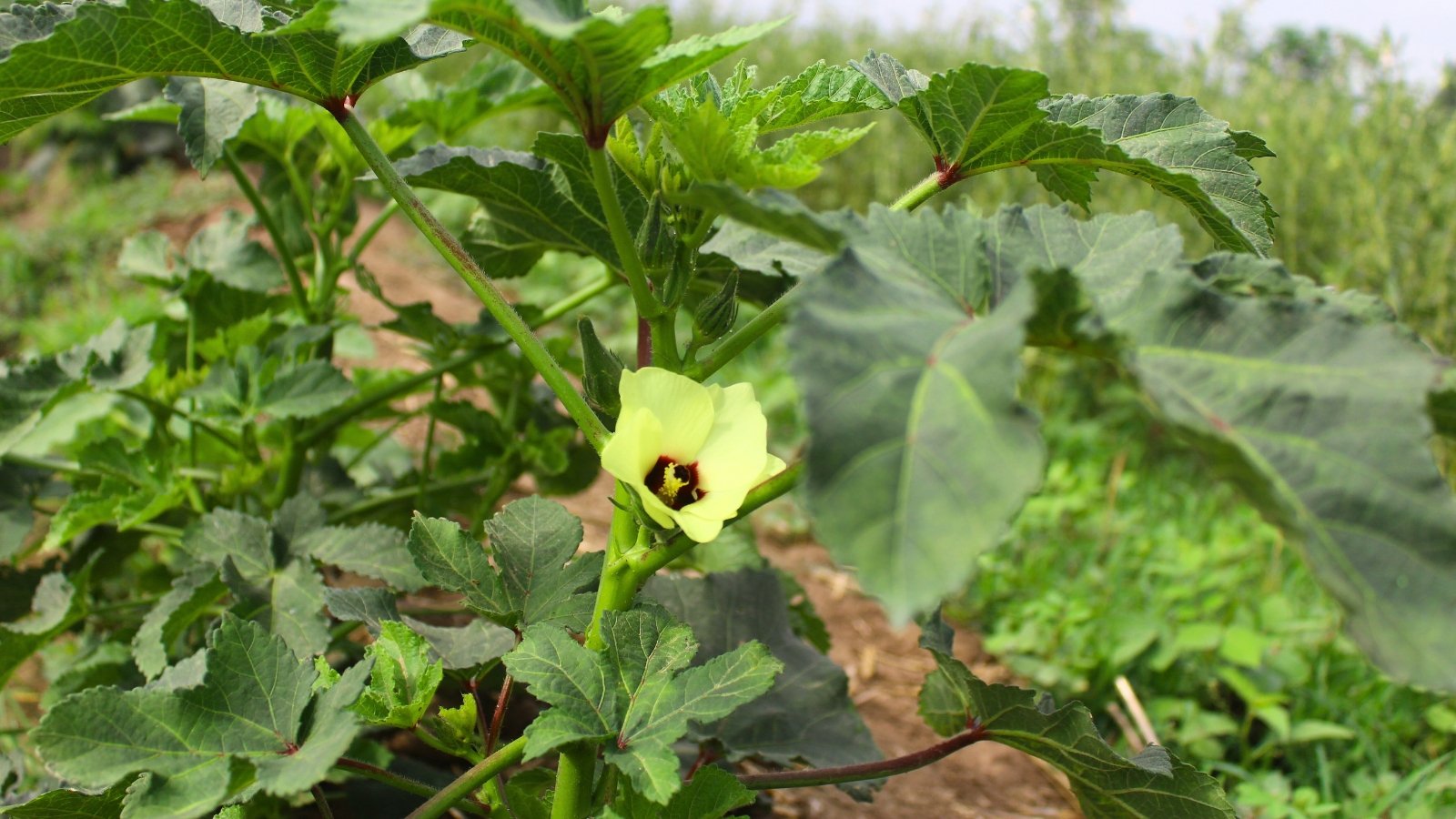
Before I worked on a Virginia veggie farm, I had no idea just how itchy okra leaves could be! I heard my coworkers speak of “okra itch,” but I tossed it aside in a naive attempt to show my immunity. All it took was one afternoon harvest to convince me I needed to suit up in long sleeves and gloves for the remainder of the season’s harvests.
Of course, touching okra is unavoidable if you want to enjoy the plant’s tasty fruits. But knowing about the plant’s irritating properties will help you properly prepare yourself for harvest. The exact cause of okra itch is unknown; some people cite the plant’s fine hairs, while others think enzymes that break down proteins are responsible for lesions and rashes. While many people find okra irritating, it doesn’t affect everyone.
Covering your skin while harvesting is one way to protect yourself. You can also prune off lower leaves to limit your contact with the foliage.
German Primrose
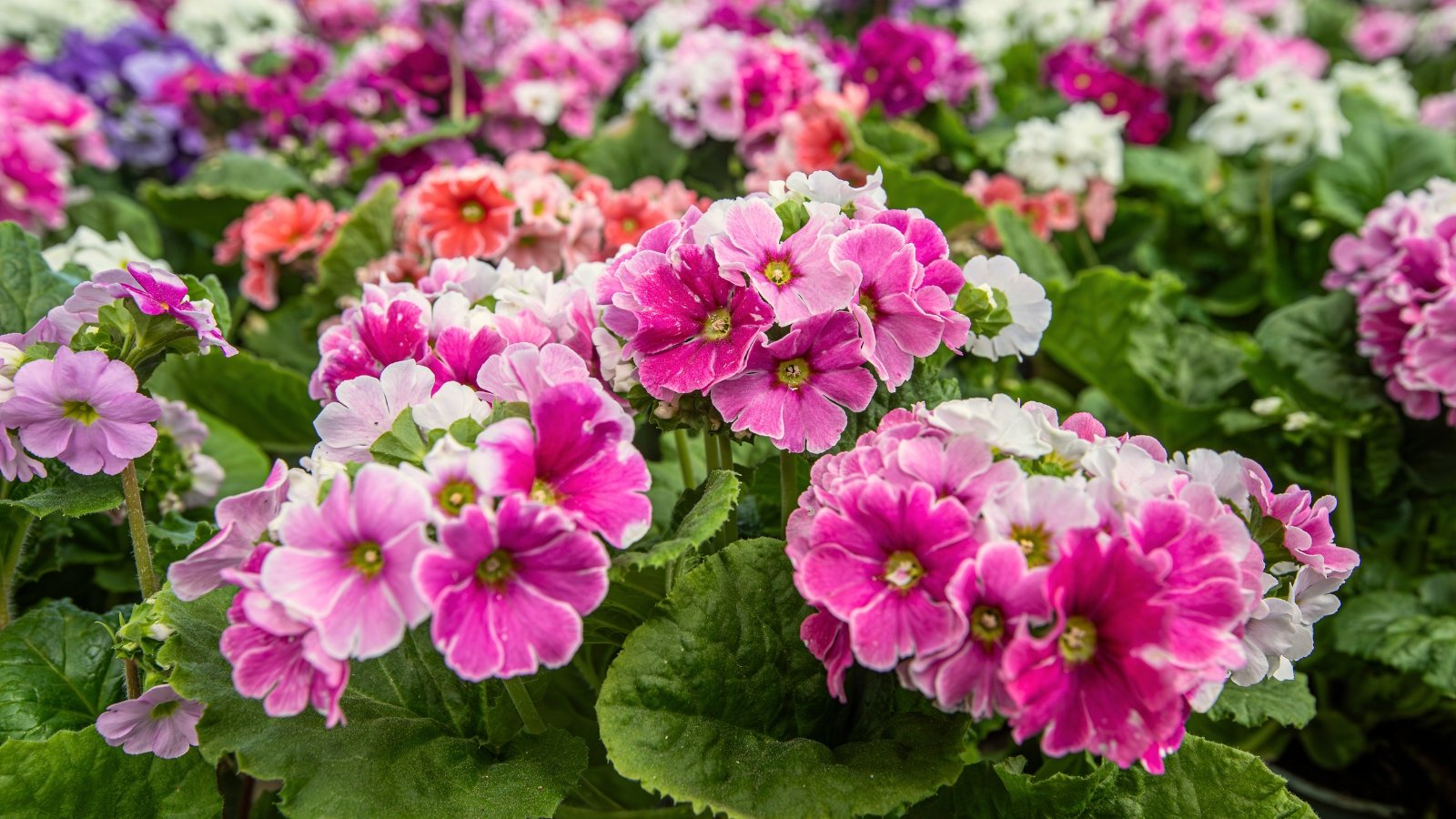
Many gardeners delight in German primrose’s lush green leaves and tall clusters of cute, colorful flowers. Since the flowers bloom in the winter and early spring, they add color when many other species are dormant. You can also grow them outdoors in warm areas.
The plant’s leaves are covered with small hair-like protrusions that secrete primin and primetin. These toxins cause skin irritations, so you should avoid handling the foliage and stems with bare hands.
Poodle-Dog Bush
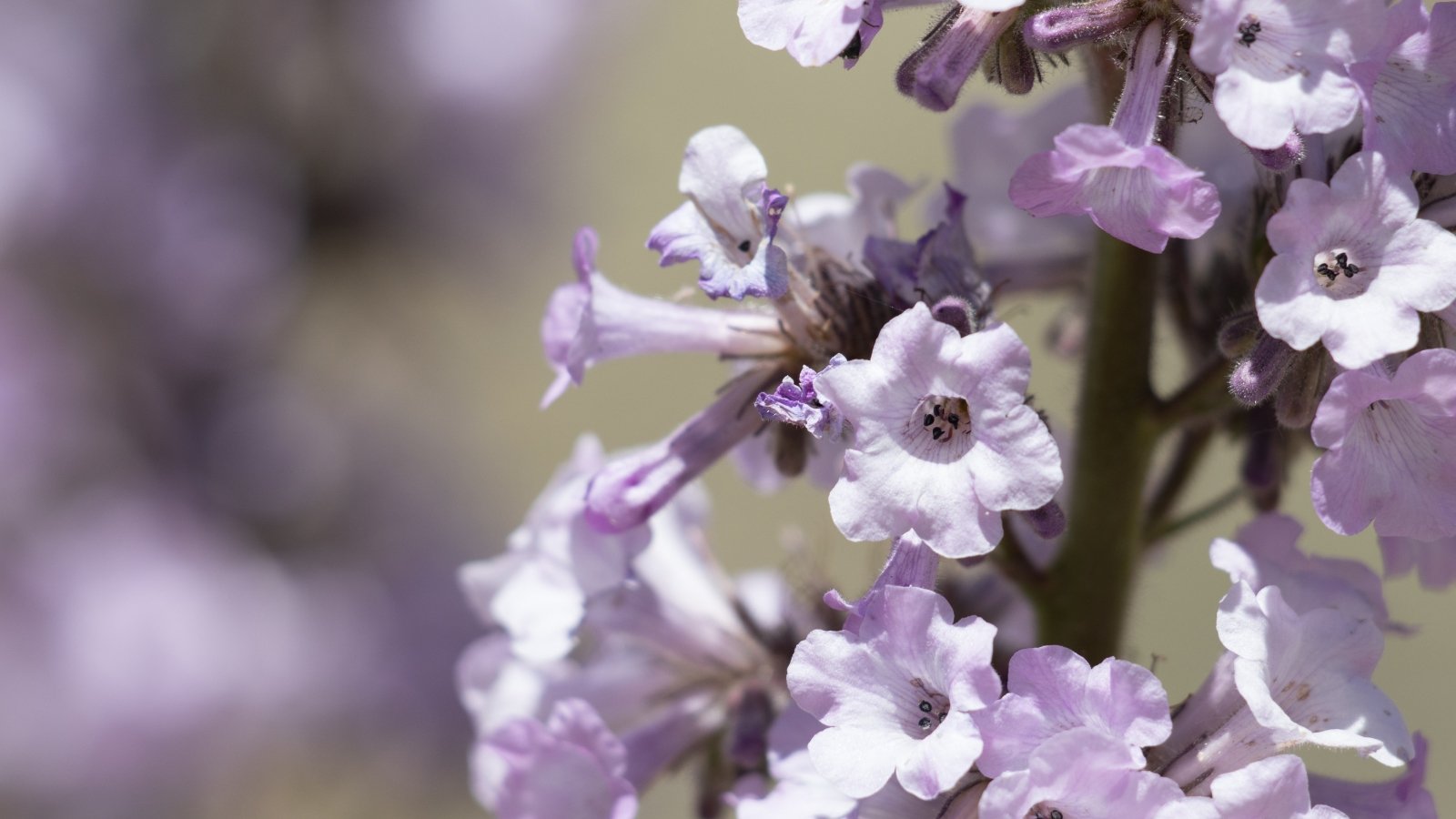
Native to southern California, the poodle-dog bush often grows in areas recently burned by wildfires. Its deep roots penetrate the ground and help hold the bare soil in place. The plant grows as a small shrub with multiple long stems covered with narrow leaves. Older leaves often curl downward, leading to the plant’s common name. During the summer, it produces clusters of tubular purple flowers.
The leaves are covered with tiny, irritating hairs. If your skin comes into contact with these hairs, you’ll likely develop an itchy, red rash in the following days. Since the hairs can remain on clothing and other materials, you should carefully handle any substances that come into contact with the leaves.

